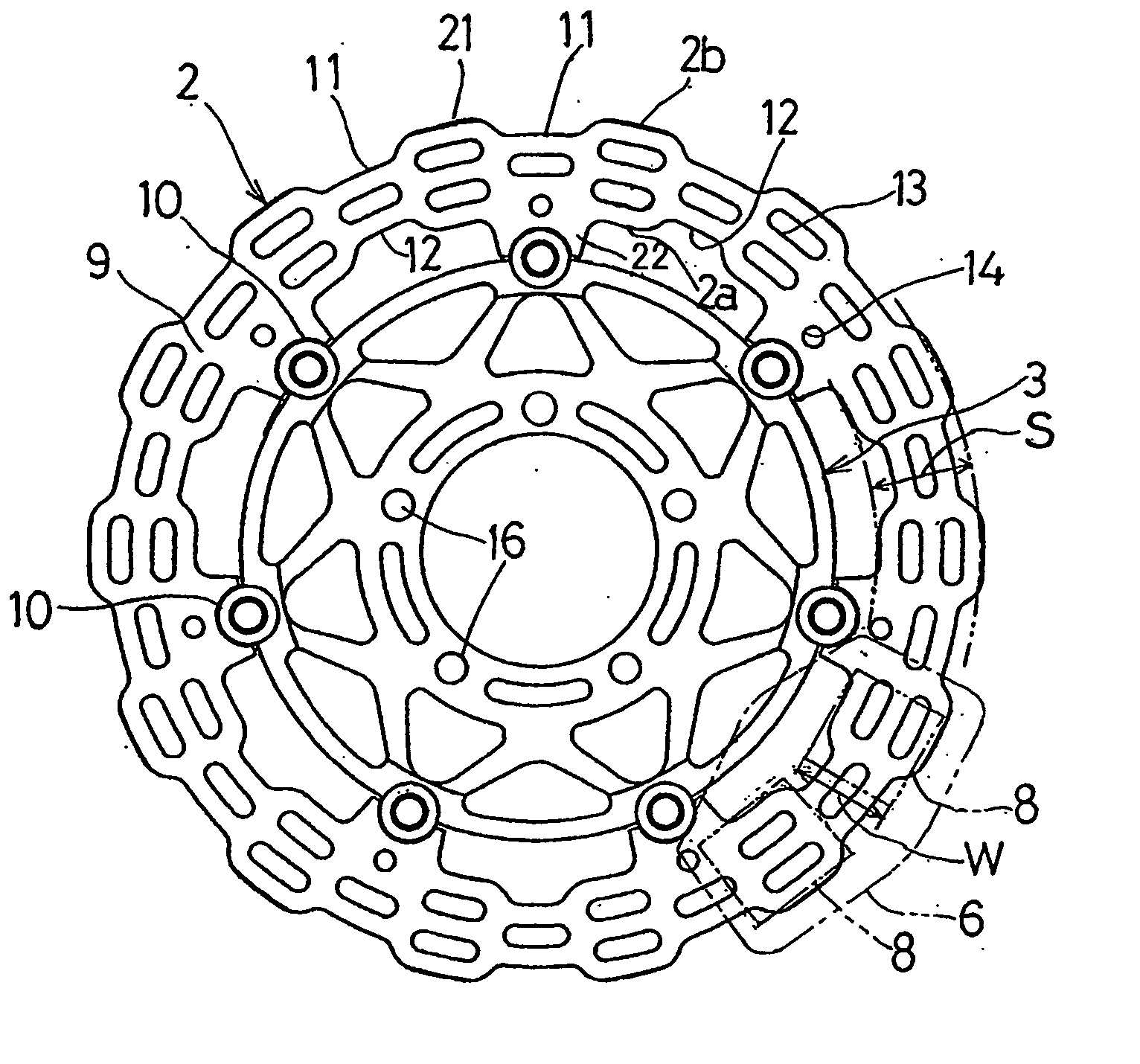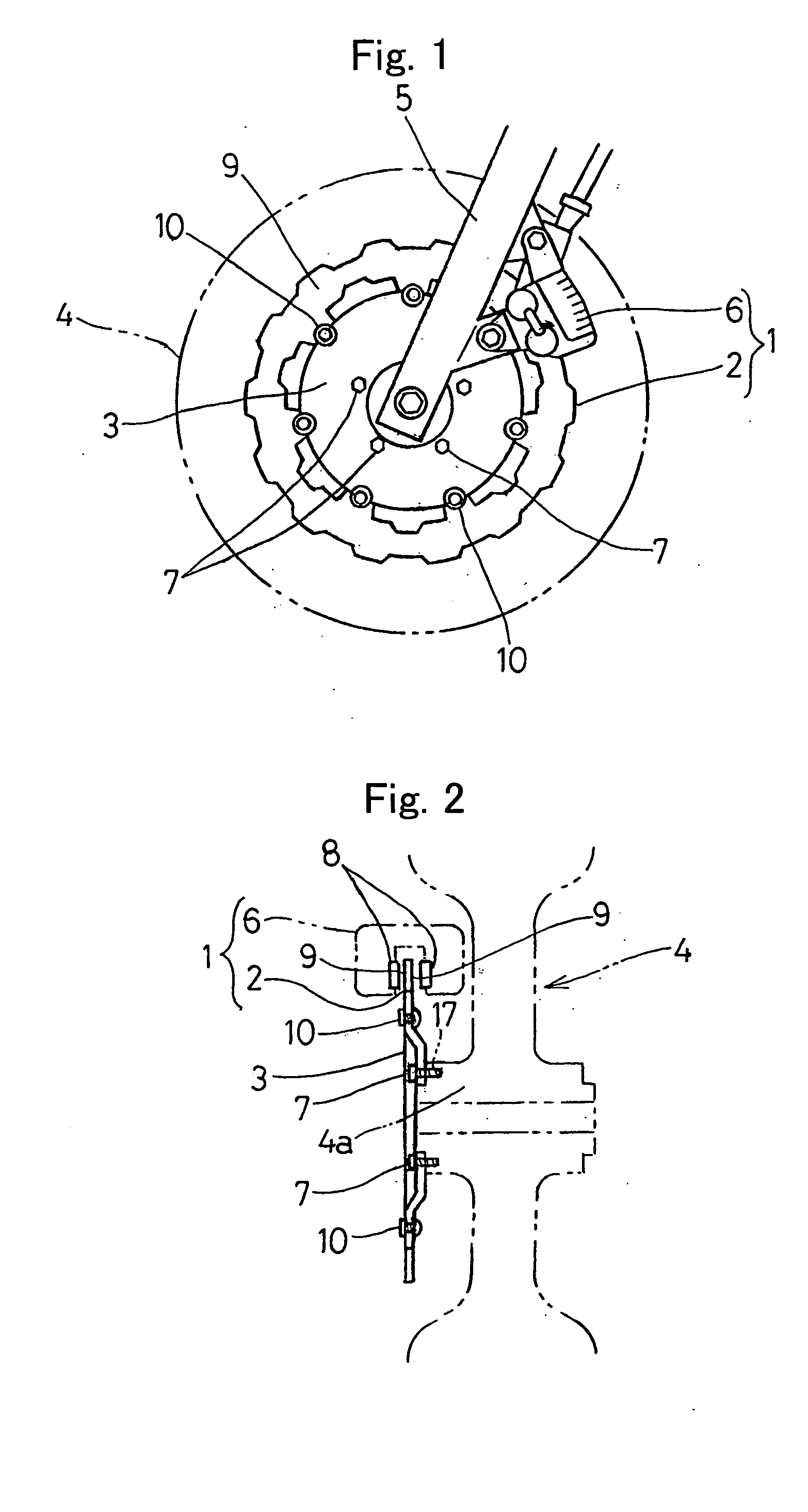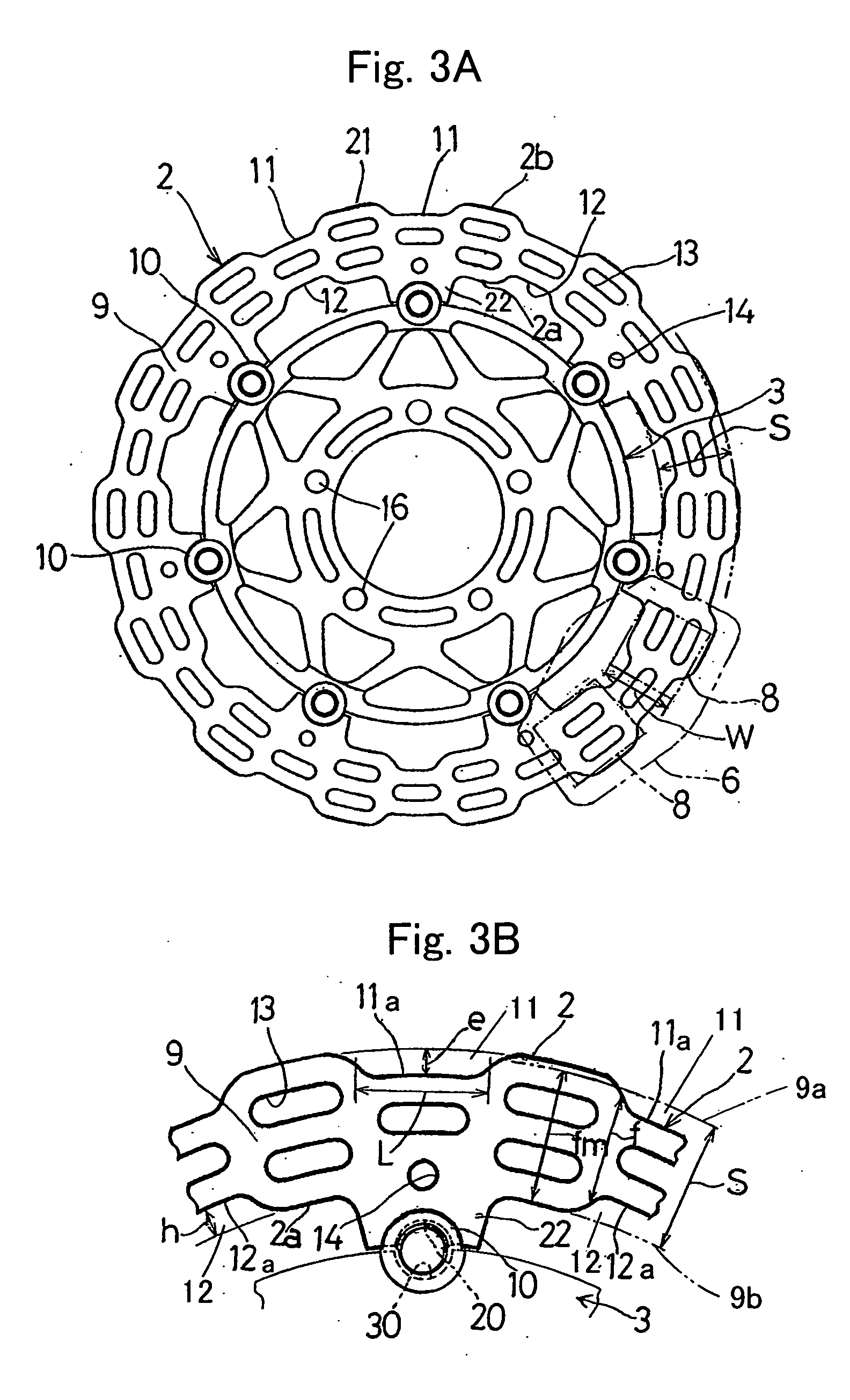Brake disc for automotive disc brake assembly
a technology for brake discs and brake assemblies, applied in the field of brake discs, can solve the problems of insufficient effectiveness of grooves, reduced capacity and heat dissipation, and thermal deformation of brake discs b>50/b>, so as to prevent brake noise and suppress thermal deformation
- Summary
- Abstract
- Description
- Claims
- Application Information
AI Technical Summary
Benefits of technology
Problems solved by technology
Method used
Image
Examples
Embodiment Construction
[0028] Hereinafter, preferred embodiments of the present invention will be described with reference to the accompanying drawings. Referring first to FIG. 1 illustrating, in a side view, a motorcycle front wheel provided with a brake disc for a vehicle according to a first preferred embodiment of the present invention, the brake disc identified by 2 forms a part of and is operatively associated with a disc brake assembly 1 that is mounted on a motorcycle. This brake disc 2 is fixedly mounted on a wheel 4 for rotation together therewith and has braking surfaces 9 and 9 opposite to each other. The disc brake assembly 1 also includes a caliper 6 mounted on a motorcycle body structure, for example, a front fork 5. As shown in FIG. 2, the brake disc 2 is fixedly mounted on the wheel 4 through a disc hub 3 rigidly secured to a wheel hub 4a of the wheel 4 by a plurality of bolts 7. The caliper 6 includes left and right frictional pads 8 and 8 that can be driven through caliper pistons (not ...
PUM
 Login to View More
Login to View More Abstract
Description
Claims
Application Information
 Login to View More
Login to View More - R&D
- Intellectual Property
- Life Sciences
- Materials
- Tech Scout
- Unparalleled Data Quality
- Higher Quality Content
- 60% Fewer Hallucinations
Browse by: Latest US Patents, China's latest patents, Technical Efficacy Thesaurus, Application Domain, Technology Topic, Popular Technical Reports.
© 2025 PatSnap. All rights reserved.Legal|Privacy policy|Modern Slavery Act Transparency Statement|Sitemap|About US| Contact US: help@patsnap.com



